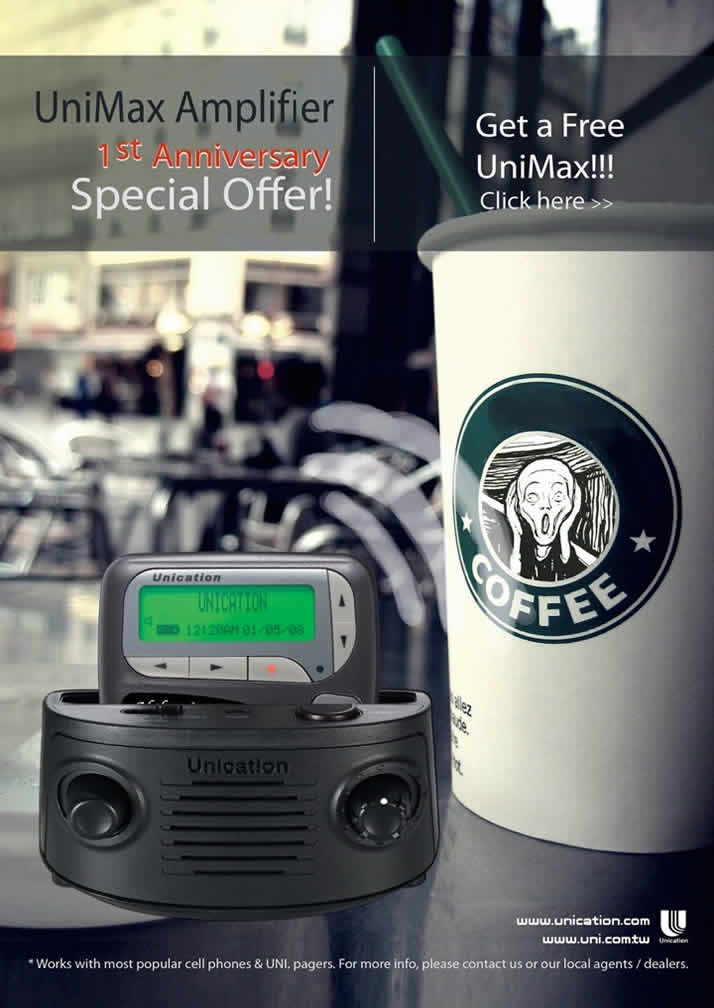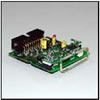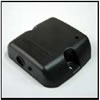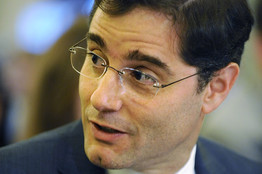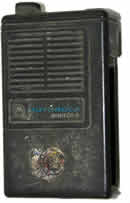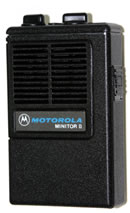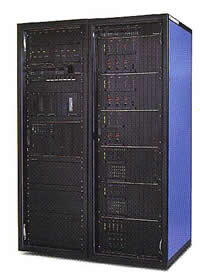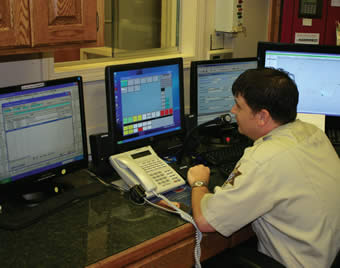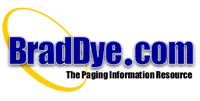BloostonLaw Telecom Update Published by the Law Offices of Blooston, Mordkofsky, Dickens, Duffy & Prendergast, LLP [Portions reproduced here with the firm's permission.] www.bloostonlaw.com |
| Vol. 12, No. 43 | x December 2, 2009 |
 INSIDE THIS ISSUE - Third Battle of Bull Run may end soon as Manassas City considers shutting off BPL Internet access system.
- Auction of unsold paging licenses set for May 25.
- FCC seeks more data on uses of spectrum.
- FCC to give update on National Broad-band Plan at open meeting.
- NTIA requests access to FCC Form 477 broadband data.
|
Third Battle of Bull Run May End Soon As Manassas City Considers Shutting Off BPL Internet Access System The Manassas, Va., City Council is debating whether to close down the city’s broadband over power lines (BPL) Internet access service because of its high cost, according to a recent article in the News and Messenger and posted on InsideNoVA.com. ARRL, the Association for Amateur Radio, which opposes BPL because of alleged interference to its members’ operations, once termed the fight over BPL in Manassas as the “Third Battle of Bull Run.” But ARRL recently noted that that battle may be coming to an end. Manassas introduced BPL in 2003, but has since spent $1.6 million on the project, and has continued to lose customers. According to the News and Messenger, fore-casts by the city’s utilities commission show that the service is likely to lose up to $171,353 each year over the next nine years. The service costs $24.95 per month, but there are little more than 500 residential customers and approximately 46 business customers. Original projections were that the customer base would be double this. In a Special Meeting on November 16 of the Manassas City Council, the Council voted to allow the Manassas Utility Commission “to make a recommendation to the City Manager as part of the FY 2011 Budget regarding the decision to continue offering Internet service; additionally, staff was instructed to discontinue all marketing and advertising of Internet service." This motion passed 4-2, clearing the way for Manassas to keep BPL Internet service in the budget. A motion to shut down the service immediately was defeated. At the meeting, Manassas Director of Utilities Michael Moon told the Council that "it is not cost-effective to continue the internet service on the Main.net BPL communication system as a stand-alone cost center" and that the City "need[s] to make the decision for internet service in the context of what communication system will be used for the City's AMI [Advanced Metering Infrastructure]." ARRL Chief Executive Officer David Sumner said that the Manassas BPL system was "once touted as 'the most successful BPL deployment in the nation.' Manassas actually has demonstrated that there is no business case for BPL as a consumer broadband delivery medium." According to the News and Messenger, Councilman Jonathan Way said that the City "needs to get out of BPL forthwith. It's not a good product. The whole business is not financially sound and it never has been." Councilman Mark Wolfe agreed with Way, saying he wanted to see the system shut down by the end of the fiscal year on June 30, starting the shutdown process now. The newspaper reported that the Manassas Utility Commission proposed to make the decision whether to shut down the system by the end of the fiscal year, June 30, 2010. While Wolfe and Way want it shut down before that date, Councilmen Marc Aveni and Vice Mayor Andy Harrover argued that it would be best to leave BPL out of the City's next budget; by doing this, there will be no funding for the service and it will go and die what the News and Messenger called "a natural death." According to the newspaper, Way said that waiting until the end of the fiscal year to make the decision "would cost more money because the city couldn't just turn off the service overnight once the decision is made." As noted above, Way’s motion to shut down the service immediately was defeated, and Aveni’s motion to continue the service carried. Manassas' Assistant Utilities Director (Electric) Gregg Paulson told the ARRL that as for now, Internet service in the City of Manassas will continue, but the Council will make the decision to continue it in the next fiscal year during the budget approval process. "We'll work it through the budget," he said. "We have every intention of putting BPL Internet service in the budget and the Council can decide its fate as they work through the budget process." According to ARRL, Paulson said that while Internet ser-vice to consumers would "probably" be the only thing that would be cut if the Council decided to forego BPL, he left the door open as to using the BPL infrastructure for other purposes: "We still own the BPL network, but we may or may not use this network for utility monitoring or other AMI purposes." ARRL noted that BPL technology uses the electricity grid in a city and the wiring in individual homes to provide direct "plug in" broadband access through electricity sockets, rather than over phone or cable TV lines. Be-cause BPL wiring is physically large, is often overhead and extends across entire communities, these systems pose a significant interference potential to over-the-air radio services, including Amateur Radio, ARRL said. BACKGROUND Over the years, BPL appears to have lost some of its glitter. Back in October 2004, the FCC adopted an order amending its Part 15 rules to launch Access Broadband over Power Lines (BPL) systems to compete with digital subscriber line (DSL), cable modem, and advanced wire-less systems (AWS) offerings (BloostonLaw Telecom Update, October 20, 2004). The rationale was that pow-er lines reached virtually every home in the nation. Then-FCC Chairman Michael Powell explained that “BPL works anywhere there is electricity…You plug it in like an appliance,” and receive a broadband connection. Then-Commissioner Kevin Martin was equally impressed, not-ing he had witnessed 1-3 Mbps simultaneous transmission speeds. The Federal Energy Regulatory Commission (FERC) and the National Telecommunications and Information Administration (NTIA) also voiced their sup-port for BPL technology. Only FCC Commissioner Michael Copps, who remains at the agency today, ex-pressed concern about interference protection regarding BPL five years ago. As noted, ARRL has been a BPL opponent from the very beginning because of that technology’s potential to interfere with amateur radios. Last July, the FCC issued a Further Notice in response to a remand from the U.S. Court of Appeals for the District of Columbia Circuit, which had ruled that the Commission had not provided proper notice regarding certain technical studies and not released certain studies relating to interference. That proceeding remains pending, and the FCC and ARRL remain at odds over whether BPL interferes with amateur radios and other over the air devices. This past summer, the Europe-based Organisation for Economic Cooperation and Development (OECD) published a detailed report, Broadband over Powerlines: Developments and Policy Issues, on what was considered a potential rival to digital subscriber line (DSL) and cable modem. It notes that having largely failed in that, it is instead being applied to "smart grid" applications. While BPL has all the features of a promising technology, it has not, as yet, fulfilled earlier expectations, according to the report. The extremely slow growth in the number of BPL service providers, and customer base, and the fact that a number of BPL service providers have been withdrawing from the market, concentrating instead on developing smart-grid technology to monitor energy consumption, seems to indicate that service providers face problems, OECD said. The report stated that there are a number of technological and, to a lesser extent, regulatory issues which need to be overcome in order to facilitate the take-off of BPL technology in the market. The electrical grid provides a harsh environment for data transmission, issues regarding radio frequency interference are both technological and regulatory, and international standardization is incomplete. BPL requires investment, in particular where power grids are old, and BPL also requires investment to send data over long distances. Furthermore as broadband over DSL migrates to fiber and cable modem speeds increase as a result of new technology, the competitive environment facing BPL becomes more difficult, according to OECD. In short, the report said, while there may be a potential for BPL to further competition in the broadband market, there is little evidence to indicate that this will take place soon and that it can be counted on to provide a competitive alternative in the near term to xDSL (or fiber to the home) and cable modem technologies. Nevertheless, OECD said, a technology neutral policy would argue in favor of regulators ensuring that no unnecessary barriers are in place for the eventual commercial diffusion of this technology as well as ensuring that interference with other licensed wireless services is minimized. Writing in the 2008 issue of NRECA’s RE Magazine, John Lowery said that BPL still held out promise. He said some experts believe BPL’s real future lies in letting consumers monitor and control household electric use based on price signals received online. But he admitted that BPL skeptics maintain that issues involving reliability and maintenance as well as cost (topping $2,000 per active BPL customer on some rural lines), continue to dampen BPL enthusiasm within the electric utility industry. He noted that Oncor Electric Delivery Company, the Dallas, Texas-based distribution arm of investor-owned utility TXU Energy, scrapped plans for offering BPL service to 2 million consumers, and will use data capabilities of the network to monitor the electric grid. Nationwide, in 2008, the FCC reported just 4,776 BPL subscribers, Lowery said. Meanwhile, he noted that one electric co-op, South Central Indiana Rural Electric Membership Corporation in Martinsville, Ind., has been offering BPL service as part of a pilot project to 180 consumers for almost four years. South Central Indiana REMC, along with Lovingston, Va.-based Central Virginia Electric Cooperative and Cullman Electric Cooperative in Cullman, Ala., have worked with International Broadband Electric Communications, Inc. (IBEC), to develop a practical rural BPL sys-tem delivered over medium-voltage main lines and feed-er circuits running out of a substation. The co-ops feel problems that plagued their early BPL efforts have been addressed, Lowery said. Despite these efforts, as the OECD report noted, few commercial BPL systems ever offered commercial consumer Internet service. Most utilities that started such service have stopped and turned to smart grid applications. The most prominent examples are Duke Energy in Cincinnati and Oncor in Dallas. BloostonLaw contacts: Hal Mordkofsky, John Prendergast, and Richard Rubino. Auction of Unsold Paging Licenses Set for May 25 The FCC has announced an auction of 9,603 paging li-censes to commence on May 25, 2010 (Auction No. 87). These licenses consist of 7,752 licenses in the lower paging bands (35-36 MHz, 43-44 MHz, 152-159 MHz, 454-460 MHz) and 1,851 licenses in the upper paging bands (929-931 MHz). Auction 87 will include licenses that remained unsold from a previous auction, licenses on which a winning bidder in a previous auction de-faulted, and licenses for spectrum previously associated with licenses that were canceled or terminated. In a few cases, the available license does not cover the entire geographic area due to an excluded area or previous partitioning. In the Paging Reconsideration Order, the Commission concluded that the lower bands licenses should be awarded in each of the 175 geographic areas known as Economic Areas (EAs), and the upper band licenses should be awarded in each of the 51 geographic areas known as Major Economic Areas (MEAs). These EAs and MEAs encompass the United States, Guam, the Northern Mariana Islands, Puerto Rico, the U.S. Virgin Islands, and American Samoa. The Commission also seeks comment on various competitive bidding procedures, and proposes to set the minimum opening bid for each license available in Auction 87 at $500. The Public Notice does not indicate that there will be any changes to the build out requirements for these paging licenses. Under the FCC's rules, any successful bidder will be required to demonstrate that it has constructed facilities that cover 1/3 of the population within three years of license grant and 2/3 of the population within 5 years of license grant. Alternatively, successful bidders may elect, at the three year mark, to provide substantial service within the market by the fifth anniversary. By electing to provide substantial service, licensees are afforded additional flexibility; although we note that the FCC has taken a closer look in more recent years. Comments in this AU Docket No. 09-205 proceeding are due December 21, and replies are due January 7. BloostonLaw contacts: Hal Mordkofsky, John Prendergast, and Richard Rubino. Comment Sought On Moving From PSTN To IP World In developing its National Broadband Plan (NBP), the FCC noted that the evolution of communications services to broadband has a significant impact on the circuit switched Public Switched Telephone Network (PSTN), a system that has provided, and continues to provide, essential services to the country. “Our country has been through other communications transitions, such as the transition from analog mobile service to digital mobile service or the transition from analog broadcast television to digital broadcast television,” the FCC said. “While each transition is different, policy has played an important role in ensuring consumers were protected from loss of essential services and were informed of the choices presented by the transition.” As a result, the Commission has issued a Public Notice to set the stage for it to consider whether to issue a Notice of Inquiry (NOI) relating to the appropriate policy framework to facilitate and respond to the market-led transition in technology and services, from the circuit switched PSTN system to an IP-based communications world. In the spirit of understanding the scope and breadth of the policy issues associated with this transition, the FCC seeks comment to identify the relevant policy questions that an NOI on this topic should raise in order to assist the Commission in considering how best to monitor and plan for this transition. In identifying the appropriate areas of inquiry, the FCC seeks to understand which policies and regulatory structures may facilitate, and which may hinder, the efficient migration to an all IP world. In addition, the FCC seeks to identify and understand what aspects of traditional policy frameworks are important to consider, address, and possibly modify in an effort to protect the public interest in an all-IP world. For ex-ample, one line of questioning that a Notice of Inquiry may pursue is how to continue ensuring appropriate protections for and assistance to people with disabilities in the transition to an IP-based communications world. Another line of inquiry could focus on the role of carrier of last resort obligations. In this Public Notice, the FCC seeks comment on what policy areas should be understood in considering how best to prepare for the transition from the circuit-switched to the IP-based communications world. Comments in this GN Docket Nos. 09-47, 09-51, and 09-137 (NBP Public Notice #25) proceeding are due December 21. There is no opportunity for reply comments. BloostonLaw contacts: Ben Dickens, Gerry Duffy, and Mary Sisak. FCC Seeks More Data On Uses Of Spectrum After a review of the responses to the Spectrum for Broadband Public Notice in the National Broadband Plan proceedings, the FCC seeks more specific data on the use of spectrum currently licensed to broadcast television stations. This inquiry takes into account the value that the United States puts on free, over-the-air television, while also exploring market-based mechanisms for tele-vision broadcasters to contribute to the broadband effort any spectrum in excess of that which they need to meet their public interest obligations and remain financially viable, the FCC said. This inquiry also seeks to under-stand what processes and incentives could ensure continuing spectral efficiency gains for broadcasters going forward. A. General Approach to Spectrum Assessment 1. What factors should the Commission consider when examining and comparing the benefits of spectrum used for over-the-air television broadcasting and those of spectrum used for wireless broadband services? 2. What would be the impact to the U.S. economy if insufficient additional spectrum were made available for wireless broadband deployment, in terms of investments, jobs, consumer welfare, innovation, and other indicators of global leadership? 3. What would be the impact to the U.S. economy and public welfare if the coverage of free over-the-air broadcast television was diminished to accommodate a repacking of stations to recover spectrum? 4. How do television broadcasters use the capabilities of digital television today? Please provide information on data rate allocations to HD, SD, multicast streams, bandwidth leasing arrangements, etc. and the business rationale behind these choices. 5. How do broadcasters plan to use licensed spectrum in the future? a. What innovations in applications, services, or business models will create synergies between broad-band and broadcast services, or other new value from currently licensed spectrum? b. How should the Commission evaluate the future economic value of over-the-air digital television and new capabilities to offer mobile TV broadcasting? How does the financial community in general view that future value?
6. Consumers are migrating away from mass-market “appointment” viewing to more fragmented and time-shifted viewing. What impact will this trend have on the television broadcasting industry? What can the Commission do to help broadcasters participate in this evolution? 7. In the Telecommunications Act of 1996, Congress instructed the Commission to conduct an evaluation of the advanced television services program within 10 years after the date the Commission first issued licenses for such services. Subsection (1), which requires an assessment of the willingness of consumers to purchase the television receivers necessary to receive broadcasts of advanced television services may no longer be pertinent in light of the completion of the digital transition. Please comment on subsections (2) and (3) of Section 336(g) that require the Commission to conduct: - an assessment of alternative uses, including public safety use, of the spectrum used for advanced television broadcasts; and
- an evaluation of the extent to which the Commission may be able to reduce the amount of spectrum assigned to advanced television broadcast licensees.
B. Potential Approaches to Increase Spectrum Avail-ability and Efficiency There may be opportunities for broadcasters to share 6 MHz channels in a market without significantly disrupting the free over-the-air television service that consumers enjoy today. Stations sharing channels may be able to trade capacity (in Mbps) between or among themselves. The FCC notes that the number of broadcasting stations sharing a single 6 MHz channel would affect the number and type of signals that each can broadcast. Spectrum sharing arrangements may also entail geographic consolidation, if broadcasters who previously used different transmitting sites share spectrum at a single transmitter closer to the center of densely populated areas. 1. What are the advantages of a channel-sharing approach to broadcasters’ business? What are the dis-advantages of this approach? What are the technical and business requirements to enable successful channel sharing? 2. What opportunities exist to free up broadcast spectrum through greater collocation of transmission facilities closer to the center of densely populated areas? There are numerous examples of broadcasters collocating facilities already. What are the financial and other benefits of collocation? What are the tradeoffs for broad-cast TV stations and consumers in terms of signal cover-age and local programming efforts? 3. How will video capabilities improve over time using current MPEG-2 and 8-VSB technologies? What improvements could be gained by deployment of next generation technologies over that currently achieved un-der the ATSC standard? What would be required for broadcasters and consumers to transition to more advanced technologies? 4. To what extent would establishing antenna and receiver standards facilitate spectral efficiency and improved reception in broadcasting? What other actions could the FCC take to enable broadcasters to make more efficient use of their spectrum? 5. What percentages of broadcast programming streams are transmitted to MVPDs by over-the-air broad-cast? What percentage of MVPD subscribers receive their broadcast TV stations via an over-the-air broadcast link (either directly or through the MVPD)? What would be the costs to replace over-the-air delivery to MVPDs and consumers with other means (fiber, microwave)?
C. Broadcasting and the Public Interest Broadcasters have historically played an important role in advancing public interests through free over-the-air broadcast TV. What are the benefits of free, over-the-air television broadcasting, in particular with respect to public awareness of emergency information, local news, political discourse, and education? D. Market Mechanisms for Spectrum Contribution What market-based or other incentive mechanisms should the Commission consider to enable broadcasters to choose whether or not to make any spectrum (excess or otherwise) available for reallocation to wireless broad-band use? Comments in this GN Docket Nos. 09-47, 09-51, and 09-137 (NBP Public Notice #26) proceed-ing are due December 21). BloostonLaw contacts: Hal Mordkofsky, John Prendergast and Gerry Duffy. FCC TO GIVE UPDATE ON NATIONAL BROADBAND PLAN AT OPEN MEETING: The FCC’s tentative agenda for its December 16 open meeting includes a single item—a status report on the National Broadband Plan. The Commission staff will report on the status of the National Broadband Plan, which the FCC must deliver to Congress on Feb. 17, 2010. The presentation will focus on the policy framework for the plan. BloostonLaw is preparing comments on universal service and inter-carrier compensation policies in relation to broadband in response to NBP Public Notice No. 19. Those comments are due December 7. BloostonLaw contacts: Hal Mordkofsky, Ben Dickens, and Gerry Duffy. NTIA REQUESTS ACCESS TO FCC FORM 477 BROADBAND DATA: The National Telecommunications and Information Administration (NTIA) has re-quested access to the FCC Form 477 data that the Commission collects from broadband service providers. NTIA wants to use this data in evaluating applications and comments to the applications that it has received from broadband service providers in its administration of the Broadband Technology Opportunities Program (BTOP). In general, the Commission may share information it has collected with another government agency. NTIA explains in its request that, pursuant to the direction of the American Recovery and Reinvestment Act of 2009, it and the U.S. Department of Agriculture’s Rural Utilities Service (RUS) jointly issued a Notice of Funds Availability (NOFA) to make grants to provide broadband access to unserved and underserved areas of the country. The NOFA directs BTOP infrastructure applicants to identify in their applications the proposed service areas for funding that meet certain criteria for determining “unserved” or “underserved” areas. NTIA requests access to the Form 477 data that the Commission collects from broadband service providers because it “intends to use this data to help validate the unserved or underserved classifications of the BTOP applicants’ proposed funded service areas.” In the NTIA Request Letter, NTIA commits, as provided in the NOFA, to “protect confidential and proprietary information from public disclosure to the fullest extent authorized by applicable law....” Affected parties have until December 7 to oppose disclosure of Form 477 data to NTIA. All filings should reference WC Docket No. 09-214. BloostonLaw contacts: Ben Dickens, Gerry Duffy, and Mary Sisak. FCC PUBLISHES “NET NEUTRALITY” NPRM IN FED-ERAL REGISTER: The FCC has its “Net Neutrality” Notice of Proposed Rulemaking (NPRM) with respect to preserving an open Internet in the November 30 Federal Register. Comments in this GN Docket No. 09-191 proceeding are due January 14, and replies are due March 5. Written comments on proposed information collection requirements are due at the Office of Management and Budget (OMB) by January 29. The FCC proposes draft language to codify the four principles in the Internet Policy Statement; a fifth principle that would require a broadband Internet access service provider to treat lawful content, applications, and services in a nondiscriminatory manner; and a sixth principle that would require a broadband Internet access service provider to disclose such information concerning network management and other practices as is reasonably required for users and content, application, and service providers to enjoy the protections specified in this rule-making (BloostonLaw Telecom Update, October 28). The Commission also proposes draft language to make clear that the principles would be subject to reasonable network management and would not supersede any obligation a broadband Internet access service provider may have—or limit its ability—to deliver emergency communications or to address the needs of law enforcement, public safety, or national or homeland security authorities, consistent with applicable law. The draft rules would not prohibit broadband Internet access service providers from taking reasonable action to prevent the transfer of unlawful content, such as the unlawful distribution of copyrighted works. Nor would the draft rules be intended to prevent a provider of broadband Internet access service from complying with other laws. The NPRM seeks comment on a category of “managed'' or ”specialized'' services, how to define such services, and what principles or rules, if any, should apply to them. The NPRM affirms that the six principles the Commission proposes to codify apply to all platforms for broadband Internet access, and seeks comment on how, in what time frames or phases, and to what extent the principles should apply to non-wireline forms of Internet access, including, but not limited to, terrestrial mobile wireless, unlicensed wireless, licensed fixed wireless, and satellite. The NPRM also seeks comment on the enforcement procedures that the Commission should use to ensure compliance with the proposed principles. BloostonLaw contacts: Ben Dickens, Gerry Duffy, and Mary Sisak. Robert “Don” McLeod, founder and owner of Steno-call/Lubbock Radio Paging Service Inc. In 1954, Don and his wife Ethel purchased Stenocall, a small secretarial service and in later years added Radio Paging Service, the first city-wide selective paging service in the country. They grew their service to include answering service, state-wide and nationwide paging coverage, two way service, cellular service and an inbound call service. Don has always been active in the affairs of the radio common carrier industry and served not only as President of the National Association of Radio Telephone Systems, which under his presidency was renamed Telocator, (and eventually became PCIA), but served as Director of the National Association as well as President of the Texas Association and President of the South Central Region of radio common carriers. He is survived by his wife Ethel and numerous nieces and nephews. —From the Lubbock Avalanche-Journal, December 1. | 







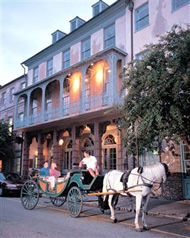

 Named as one of the top 5 U.S. destinations for fourteen years, Charleston combines luxury and history with an international flavor that will make any visitor feel at home. You can stand on the site of the first shot of the Civil War, come face-to-face with a giant sea turtle, tour an antebellum mansion, explore a WWII aircraft carrier, stroll through blossoming gardens, or just enjoy a trip to the beach or a round of championship golf.
Named as one of the top 5 U.S. destinations for fourteen years, Charleston combines luxury and history with an international flavor that will make any visitor feel at home. You can stand on the site of the first shot of the Civil War, come face-to-face with a giant sea turtle, tour an antebellum mansion, explore a WWII aircraft carrier, stroll through blossoming gardens, or just enjoy a trip to the beach or a round of championship golf. 



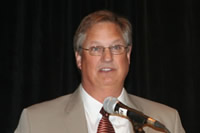
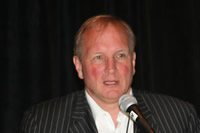











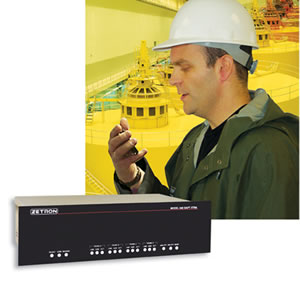 The Model 640 DAPT-XTRA Paging Terminal is a cost effective solution for small to medium-sized systems and private organizations offering a paging service based on bureau-type operator paging and/or direct telephone access. The 640 supports up to 1,500 users with up to 4 telephone lines. It also supports voice paging, voice prompts, talkback paging, and alphanumeric paging.
The Model 640 DAPT-XTRA Paging Terminal is a cost effective solution for small to medium-sized systems and private organizations offering a paging service based on bureau-type operator paging and/or direct telephone access. The 640 supports up to 1,500 users with up to 4 telephone lines. It also supports voice paging, voice prompts, talkback paging, and alphanumeric paging.  Zetron's Remote Monitoring equipment provides monitoring and notification of unusual conditions and status changes. Messages are automatically transmitted over a radio or a public address system. Notification can be sent via speaker or radio announcement, telephone, cellular phone, or paging.
Zetron's Remote Monitoring equipment provides monitoring and notification of unusual conditions and status changes. Messages are automatically transmitted over a radio or a public address system. Notification can be sent via speaker or radio announcement, telephone, cellular phone, or paging. 

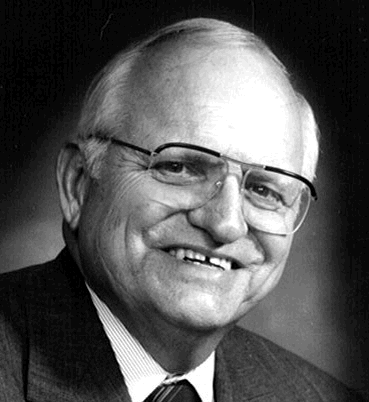 Robert "Don" McLeod was born in Wills Point, Texas and was Salutatorian of his high school graduating class. Don obtained his Bachelor of Science Degree from North Texas State College (now North Texas State University), majoring in accounting. While at North Texas, he also earned his pilot license. Following graduation from college, he was employed by the Civil Aeronautics Administration (now the Federal Aviation Agency), as an air traffic controller. His first assignment was at Albuquerque, N.M., where he met his wife, Ethel, in August of 1944.
Robert "Don" McLeod was born in Wills Point, Texas and was Salutatorian of his high school graduating class. Don obtained his Bachelor of Science Degree from North Texas State College (now North Texas State University), majoring in accounting. While at North Texas, he also earned his pilot license. Following graduation from college, he was employed by the Civil Aeronautics Administration (now the Federal Aviation Agency), as an air traffic controller. His first assignment was at Albuquerque, N.M., where he met his wife, Ethel, in August of 1944.